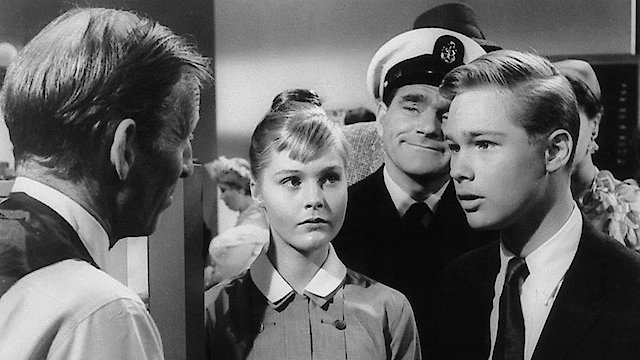
Blue Denim
Where to Watch Blue Denim

Blue Denim is a 1959 American drama film that offers a candid and sensitive exploration of teenage pregnancy and the difficulties faced by adolescents in dealing with adult issues. Directed by Philip Dunne and adapted from a stage play by James Leo Herlihy and William Noble, the film was considered daring for its time, confronting a social issue that was largely taboo in the conservative era of the 1950s.
The film stars Carol Lynley as Janet Willard, a 15-year-old high school girl who finds herself in a precarious situation after an innocent romance goes too far. Lynley's portrayal of Janet is both vulnerable and determined, as she navigates the emotional turmoil of adolescence compounded with the societal pressures of the times. Her performance is marked by a poignant realism as she captures the essence of a young girl facing unexpected adulthood.
Brandon De Wilde co-stars as Arthur Bartley, the seventeen-year-old boy and love interest of Janet. As a high-profile child actor known for his role in "Shane," De Wilde adeptly transitions into teenage roles with his portrayal of Arthur, whose initial carefree demeanor gives way to seriousness as he grapples with the consequences of his actions. De Wilde's Arthur embodies the confusion and fear that come with the responsibilities thrust upon him, and his chemistry with Lynley adds depth to their shared predicament.
Macdonald Carey plays Major Malcolm Bartley, Arthur's father, and his performance adds a critical dimension to the film as it lays bare the generational divide between teenagers and their parents during the 1950s. Major Bartley represents the adult world's often inadequate and judgmental response to the issues faced by youths, enforcing societal expectations but failing to provide the understanding support his son requires.
The story opens with the veneer of idyllic teenage life. Janet and Arthur are drawn together by the innocent throes of first love, their days filled with school, friends, and the promise of the future. However, their lives take a dramatic turn when Janet discovers she is pregnant. Suddenly, the innocence of youth is shattered as they must confront the reality of an unplanned pregnancy.
Faced with limited options and informed by the moral and societal codes of the time, Janet and Arthur grapple with their next steps. The teens find themselves in a labyrinth of choices, each one fraught with potential shame, fear, and disappointment. They confront the limitations and prejudices of the adult figures in their lives, who offer solutions that seem more akin to damage control than genuine help or empathy.
Throughout the movie, the screenplay adeptly dives into the emotional spectrum that Janet and Arthur experience — from confusion and denial to fear and desperation. As they attempt to navigate these turbulent waters, the film invites audiences to witness the internal and external conflicts that arise from their predicament.
The supporting cast provides a snapshot of the variegated reactions individuals may have to teenage pregnancy, from their peers' whispers and speculations to the grave concern of parents and the stern edicts from authority figures. These reactions reflect the societal norms and values of the late '50s, a time when such matters were seldom discussed openly and often resolved in secret or with rushed decisions.
Blue Denim is notable for not just addressing the issue of teenage pregnancy, but for presenting its young characters with a depth and sympathy uncommon in films of its era. It avoids moralizing or offering easy answers, instead showing the complexities inherent in any path Janet and Arthur might choose. The film is about being caught at the intersection of youth and adulthood, where the world expects you to make grown-up decisions without the requisite maturity or resources.
The direction by Philip Dunne is both sensitive and restrained, allowing the weight of the situation to come forth through the actors' performances and the nuanced script. Dunne manages to convey the gravity of Janet and Arthur's situation without resorting to melodrama, letting the story unfold in a way that respects both its characters and its audience.
With its black-and-white cinematography, the film captures the mood of its setting — symbolizing the stark realities its protagonists must face, while also contrasting the world of adolescence with the often grayscale world of adult decisions. The film's backdrop, set in a typical American town, reinforces the universality of the issue and the many families likely experiencing similar dilemmas behind closed doors.
Blue Denim bravely tackled subject matter that would pave the way for future generations to discuss and address such personal and societal issues more openly. By today’s standards, Blue Denim may seem less provocative, but for its time, it was a significant cinematic achievement that endeavored to bring an honest and humanizing portrayal of a delicate topic to the big screen.
Blue Denim is a Drama, Romance movie released in 1959. It has a runtime of 89 min. Critics and viewers have rated it moderate reviews, with an IMDb score of 6.6..
